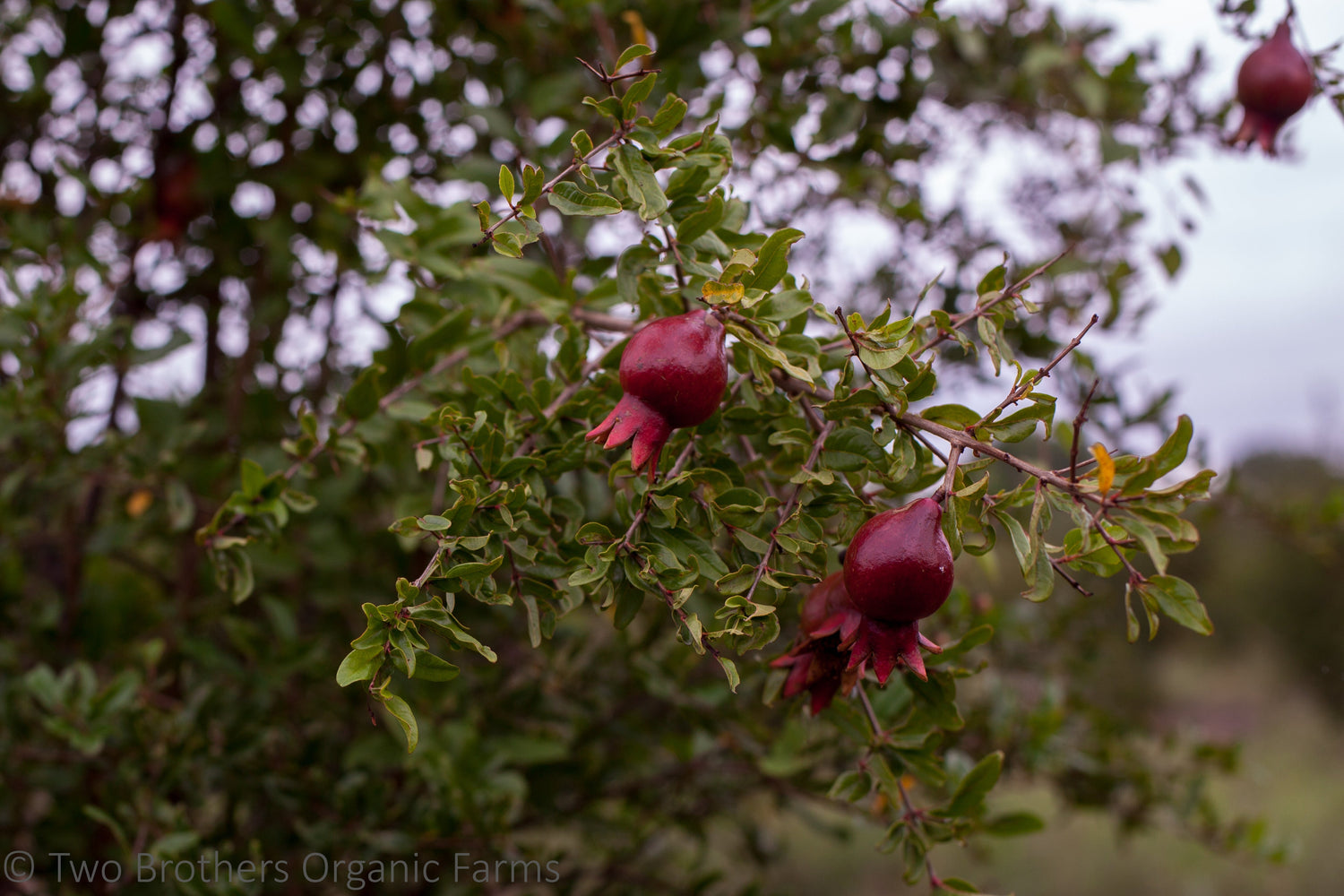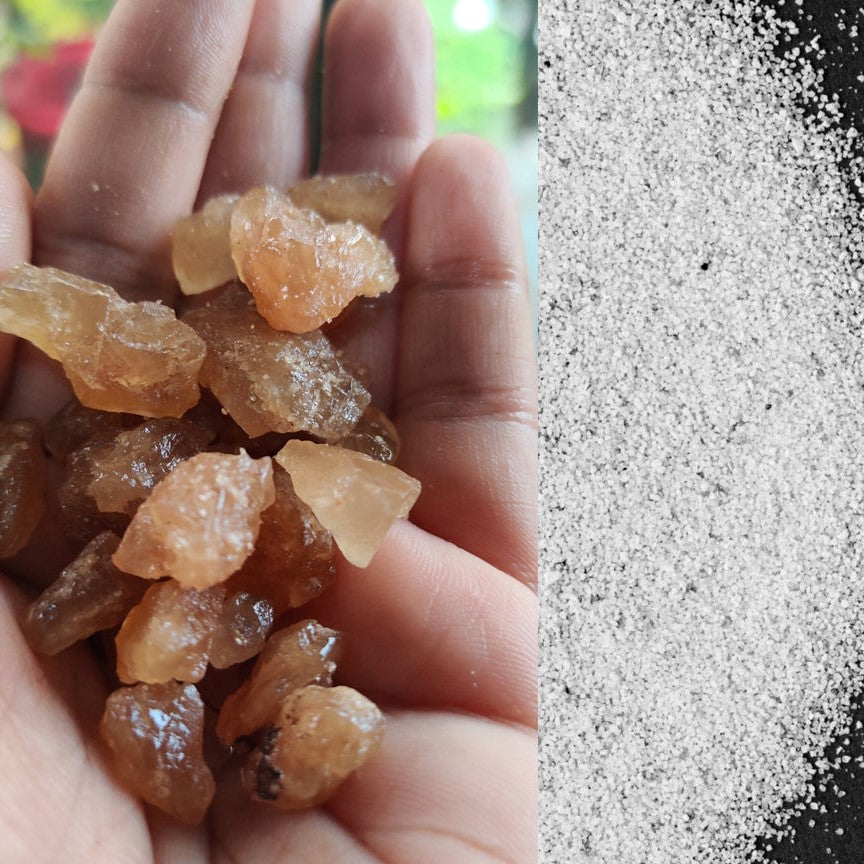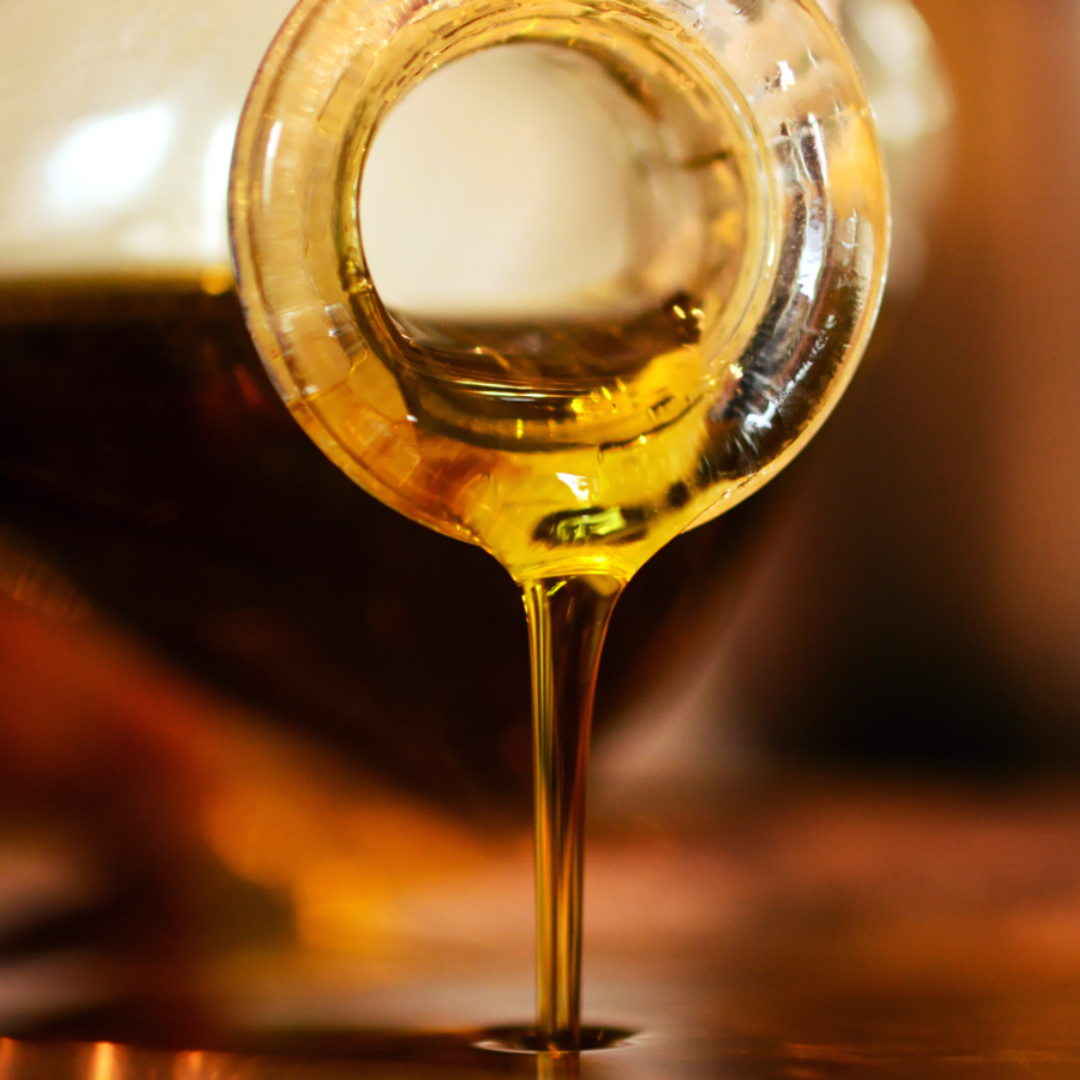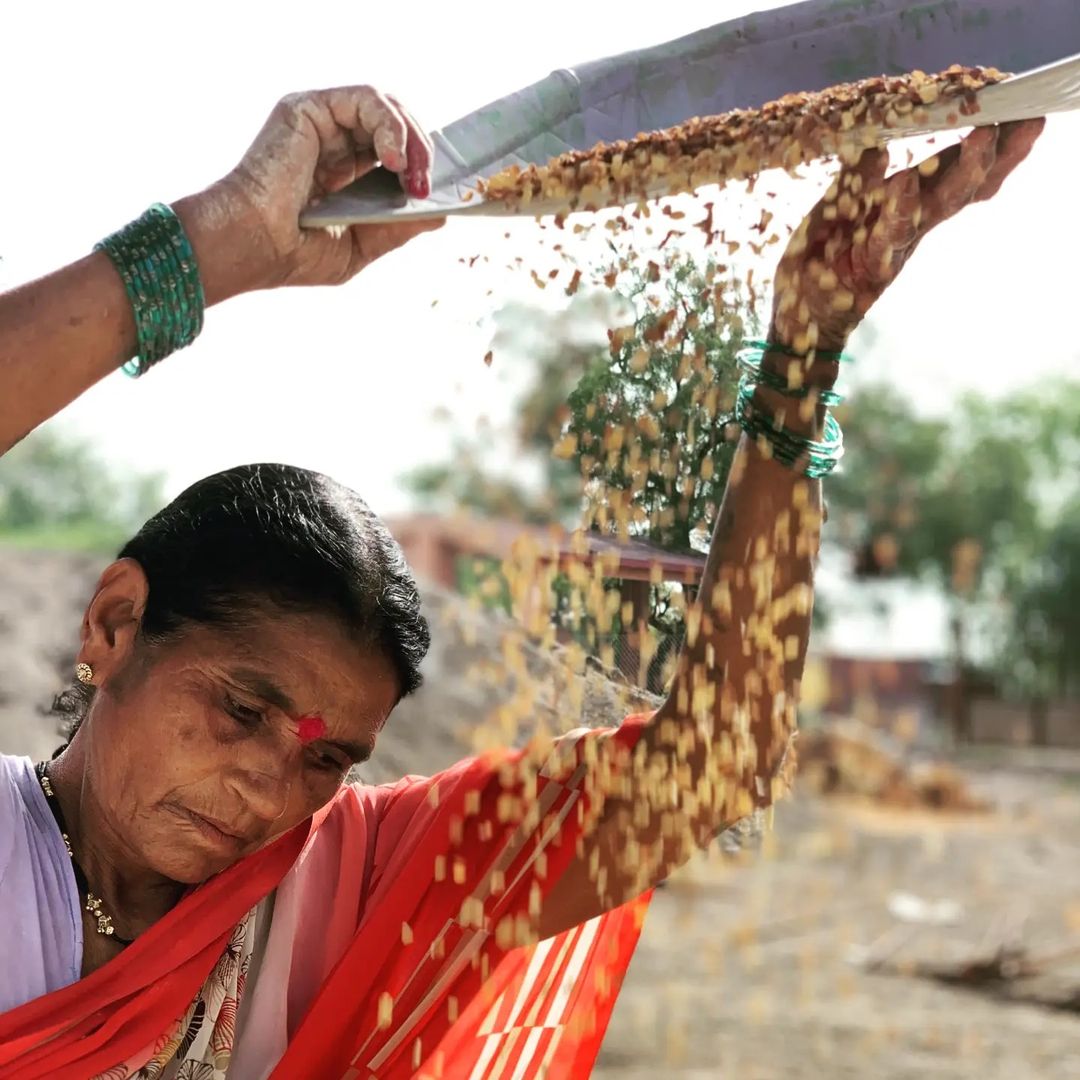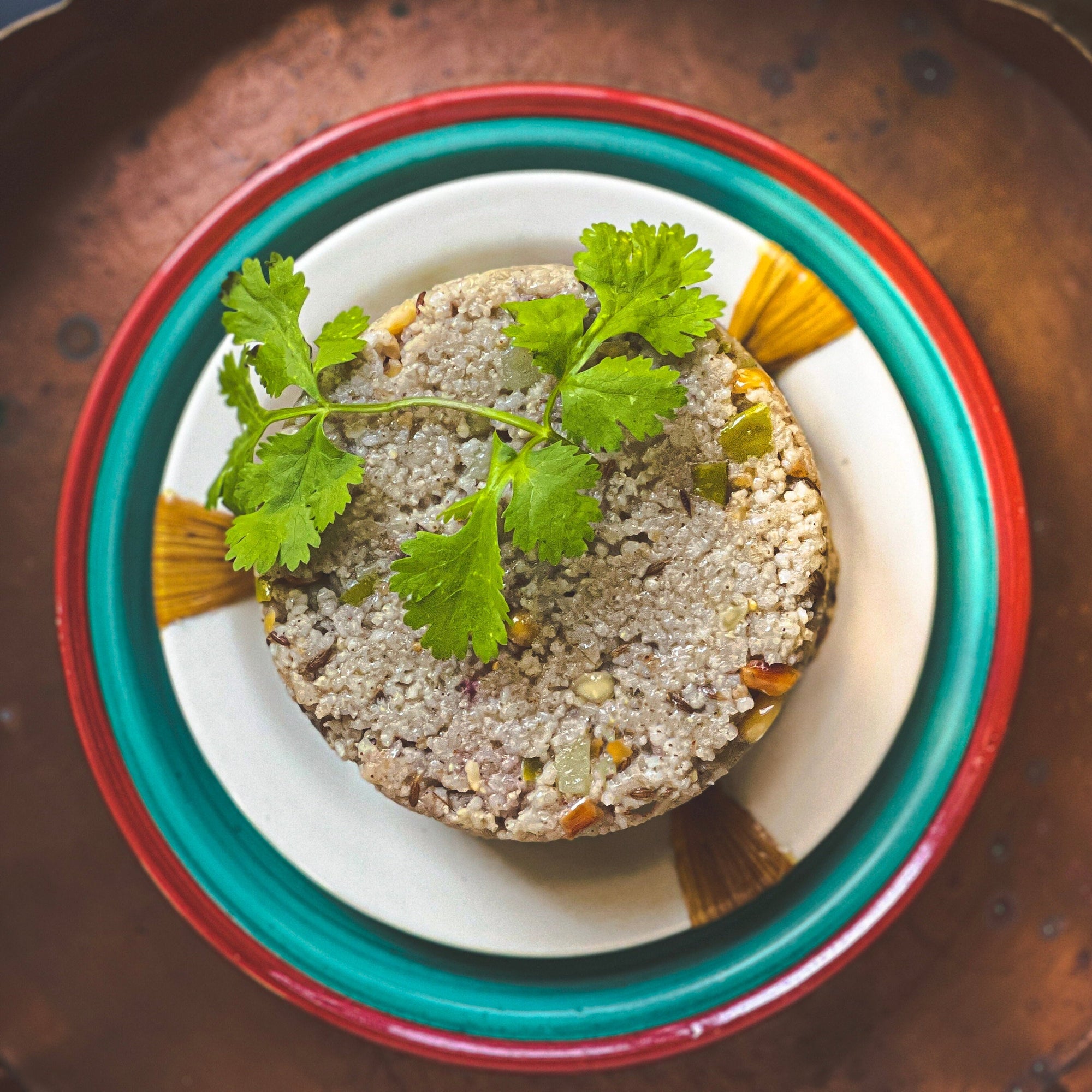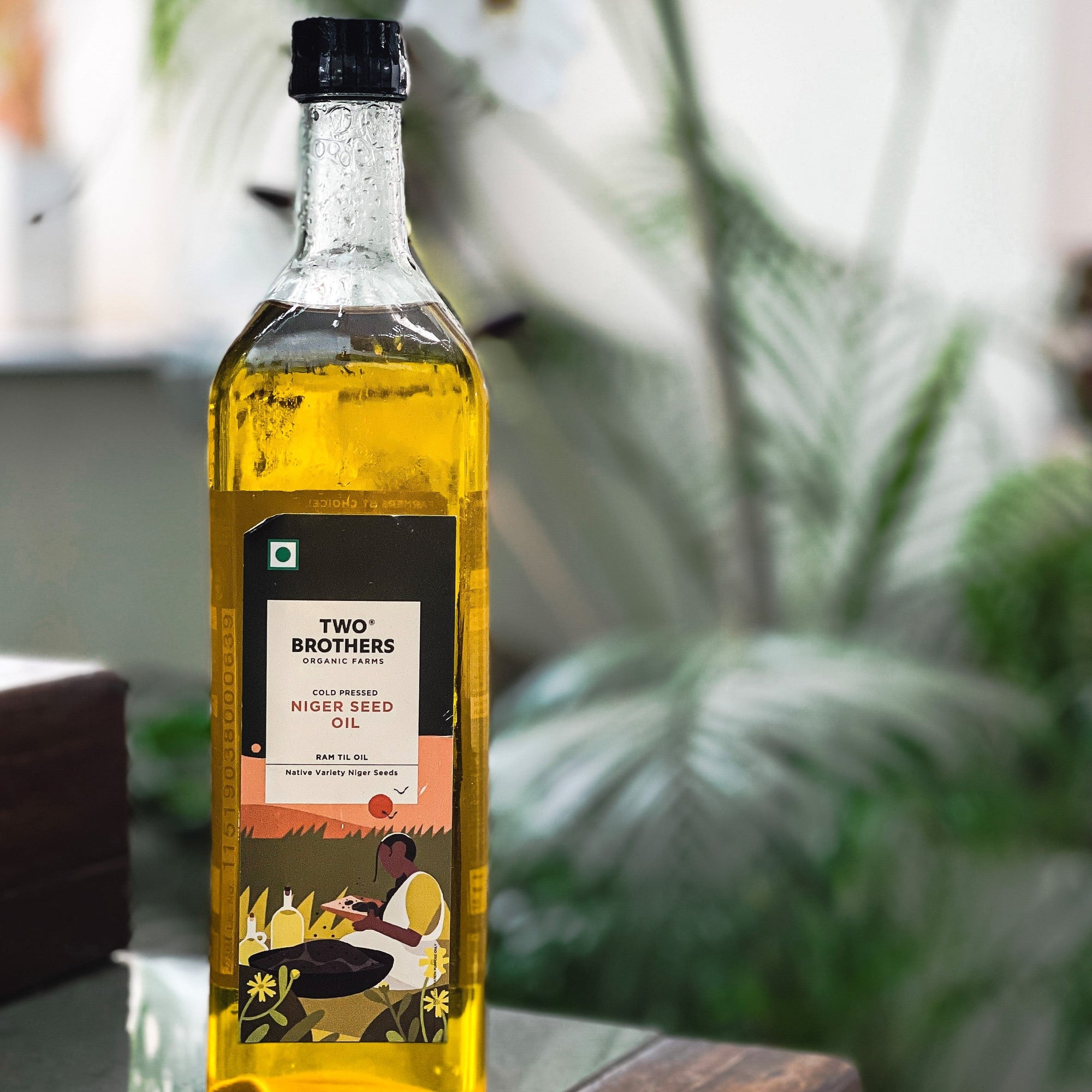
Why are organic products so costly?
We attempt to respond to this every single time we get questioned on the cost of products. So why not just talk it out here. Let’s understand the factors that play a role – it’s a complex subject and there are a lot of points we will need to cover so that we properly understand the dynamics – while you might be tempted to assume that I’ll be picking my words carefully while writing this; let me assure you that I really hope to place all facts neatly before you with utmost sincerity, and while doing so be able to cover all your confusion, the smallest of questions and misinformation.
Today Organic is a full-fledged lifestyle choice. More and more consumers are leaning towards natural living. There is clearly a growing demand for naturally farmed, organic food. Consumers today are mindful of the choices they make and are aware of how chemicals, fertilizers, and artificial additives through the food that we consume daily are destroying our health and our world. In urban cities, more and more people are instantly being drawn to the concept of an interconnected ecosystem that supports simple and conscious living and encourages a transparent link between producers and consumers.
It wasn’t too long ago – maybe 2 decades or a little more - when I was in primary school, I remember how my mother would use what South Indians or Keralites call a ‘Murram’ which is a traditional sieve used since ancient times to separate other grains and husk from rice. It is held with both hands and hit with one hand at the bottom repeatedly while the rice in it is flung into the air. The rice falls back while the lighter husks fly off or get sieved out. It was made of ‘Eeta’, a plant similar to bamboo. She would use it every day to separate husks from rice before the rice was cooked.

Similarly, jaggery is something we used a lot in our dishes, especially for breakfast or snacks at tea time. I have very special memories of my cousins wrestling each other not wanting to lose each one’s share of dark, sweet small lumps of jaggery (called bellam) that we kids relished like candies. I grew up watching the women in our house often use haldi and besan on their faces twice or thrice a week. Shikakai, amla, hibiscus and tulsi were infused into coconut oil that my grandmother heated slowly in iron kadhais and it was this fragrant oil that everyone used on their hair and scalp.
Gradually over the years, the rice no longer needed to be sieved and could be directly washed and cooked as they came in sealed packets and each grain looked dazzling white. To make it terribly hard to resist they also ran eye-popping offers like buy one get one free. For a joint family of 13, this wasn’t an offer that could be overlooked. The Murram sat idle in a corner now having no role really in the kitchen. Also, the food industry worked hard on consumer psyches where ad after ad that came on TV glorified ‘refining’ of ‘crude’ or ‘not –safe-for-health’ products.


Refining had become the norm. The more the edible oil looked pale and transparent, the better was its positioning and hence the pricing. Our jaggery had turned light brown, sometimes almost yellow as it was now bleached to give it a better colour and appearance. Sugar had grown pearl white and fine in texture. We were purifying or ‘refining’ everything.

The next two decades saw the “refined” paradigm consolidating in the consumer psyche. From regional oils, the refining oil industry had done an excellent job of having the nation shift to standardized packaged refined sunflower, soybean, canola and rice bran oils.
Just in the last 10 years, we saw definitions of “healthy” assuming never-before-seen interpretations. The processing industry kept dishing out ads that held on tightly to the fear it had succeeded in generating in our minds. We started fearing our paranthas, the coconuts native to our land. Ghee and coconut oil had by then gained a notorious reputation. Achaars were being abandoned and no matter how much our grandmothers kept telling us that all this hue and cry wasn’t for our good, we were convinced well by the industry to believe she knew little about the health challenges of modern times.


Life in the fast lane had instant oats, cornflakes and muesli take over our breakfast tables. They were super-easy to cook, time-saving and yes – they were to fix all our health issues. Even instant noodles and fruit flavoured beverages were being marketed with taglines like ‘Tasty bhi. Healthy bhi!’

In November 2017, the India State-level Disease Burden Trends report revealed some disturbing findings. The report stated that while life expectancy had gone up, more Indians were dying of non-communicable diseases such as ischemic heart disease, chronic obstructive pulmonary disease (COPD), stroke, diabetes, and chronic kidney disease. Diets low in fruit, vegetables, and whole grains, but high in salt and fat as in processed foods, were India’s leading risk factors for health loss in 2016. This led to the top officials at the Food Safety and Standards Authority of India (FSSAI) to launch the ‘Eat Right Movement.’ This initiative aims to bring in greater awareness of the dangers of eating too much-processed food. As per a report published in the Economic Times in July 2018, Mohit Anand, managing director, Kellogg South Asia was quoted saying
“Indian breakfast habits and food choices have seen some very interesting shifts over the last decade. Changing lifestyle, travel, experiences, and essentially exposure to a variety of cuisines are significantly impacting changing consumer food choices and attitude towards food. Consumers like to experience ‘food’. Therefore, food is not just sustenance any more. Another obvious big trend is the rise of ‘health & wellness’. Therefore, an education initiative like the ‘Eat Right Movement’ is a multi-stakeholder effort that will empower consumers.”
In November 2017, the Centre for Science and Environment (CSE) and Down To Earth launched a publication, ‘Body Burden: Lifestyle Diseases’, that traces crucial links between environment and health. The book investigates new and emerging environmental triggers of NCDs in India. In a press release published by Down To Earth, Sunita Narain, director general, CSE says, “Exposure to pesticides is known to cause cancer, but new data is emerging to link it to diabetes as well.”
Is ‘Organic’ the Solution?
In our quest to reverse some of these life-threatening trends, slowly and gradually people are rediscovering ancient wisdom and traditional formulas with the help of indigenous, whole grain foods native to our country.

There has been a strong restoration of our understanding and belief in unrefined products – which today represents food experiences that are unprocessed and raw. Traditional Indian Cooking Oils like Kachi Ghani cold pressed Mustard oil, Sesame oil, Coconut oil and Groundnut oil are making purposeful comebacks into our kitchens. Ancient indigenous grains and millets, natural ungraded unrefined produce, consciously raised and treated poultry, meat and eggs, whole milk from freely grazed, healthy cattle, pickles of Desi varieties of mango, lime, garlic etc have not just found renewed love and appreciation but are being perceived and acknowledged as precious and rare.
Let us now talk about Organic and its cost mechanics. Firstly, before we continue reading further, we need to muster genuine intention to gain a well-rounded, complete perspective of the several factors that play into working up the cost of what is called Organic.
Today organic is a movement.
There exists a very big portion of society that perceives ‘Organic’ to being a luxury; something that is meant for the rich.
We also have enough cynicism around with many who believe it to be fraudulent - that looting consumers in the name of organic is the new thing.
First things first -
Organic is not a fancy word.
Organic is not just about food alone.
Organic has nothing to do with being rich or elite.
So then, what is Organic?
Organic means born from nature or something that comes to form ‘naturally’.
Organic is against an order that works outside of nature and its ways. This means that it does not involve anything that is artificially or chemically imposed to enhance production.
Organic is love and respect for the interconnection of being – an understanding of how truly connected we are to all living forms within nature’s realm. Organic is this recognition of us belonging to this earth; that we are all made of the same matter.
Organic is striving to restore the health of the body, mind and earth through connecting communities with their local food systems.

One of the main problems that we have encountered is the mistrust and lack of conviction of people who are older, above 45-50 years of age. This is mainly because they instantly compare the cost of organic products today to what it used to be when they were younger – when organic was all that there was and freely available. They fail to recognize that today the small section of organic farmers that exist are operating within a completely transformed context – one that is extremely unfriendly and dominated by large agri businesses.
Let’s attempt an exercise to make this easier –
Imagine and visualize someone working in a boxed space deficient of clear, breathable air. Imagine this space to be filled with smoke, dust, harmful gases. Imagine the person working here functions sincerely in isolation. All his friends are far away and working in similar environments themselves. Imagine this person with a cloth tied around his/her nose, mouth and eyes as only basic protection, working in this space every single day! Doesn’t that seem like a very difficult situation to be in?
………..
Now imagine that it is this person’s job to filter out poison-free air or oxygen from that limited space and supply it to distributors of oxygen cylinders!
……….
Now let’s push one step further and imagine that this brave person is also asthmatic! :-)
That imagery you have before your eyes right now is pretty much the state of an organic farmer today, especially those farmers who do not have access to markets and rely on middlemen to get their produce to consumers.
Doesn’t this farmer seem to be pursuing a high-risk job? Now let us think of the costs attached to a job of this nature -
Organic crops are farmed naturally without the use of anything artificial or chemical. This essentially means that the process is slow – it takes more time to produce crops, not forcefully expedited up to meet bulk quantities.

Organic farms are not as huge as conventional farms in most cases. More importantly, today, Organic Farmers are few. Why? Because there are too many misconceptions about organic farming. Because these farmers do not benefit from any government subsidies. Because if they have to go the organic way, it is presumed that the stakes are really high.
Most Organic products are made in small batches. This is because they do not involve the use of preservatives and other artificial additives to increase shelf life. They are vulnerable to temperature fluctuations, affected easily by storage conditions and cannot stay on the shelf for months on end unlike the factory made ones. This significantly drives up the cost.

Organic farms are not as huge as conventional farms in most cases. More importantly, today, Organic Farmers are few. Why? Because there are too many misconceptions about organic farming. Because these farmers do not benefit from any government subsidies. Because if they have to go the organic way, it is presumed that the stakes are really high.
Most Organic products are made in small batches. This is because they do not involve the use of preservatives and other artificial additives to increase shelf life. They are vulnerable to temperature fluctuations, affected easily by storage conditions and cannot stay on the shelf for months on end unlike the factory made ones. This significantly drives up the cost.

Artisanal means a skilled artist/worker sitting patiently, working slowly just by using hands.
We at TBOF try to work in sync with nature’s pace and rhythm. In our 90-year-old farm-kitchen, there are no machines; if there are any, they are very old traditional equipment or rather tools like a hand churner, a manual stone grinder, a mixer that needs to be run by hands etc. Our products have a character of their own because there is no inconsiderate, rampant application of any force in its making – heat, pressure, vacuum, artificial additives or otherwise. Each of our products is crafted in an environment of Joy, fulfillment, gratitude and mutual respect and we are certain that these values find their way into the very essence of our products.


There is simply no comparison between a bulk produced bottle of machine made nut butter and small fresh batches of handmade butter using freshly harvested organic peanuts sand-roasted patiently on low heat and then ground with organic artisanal jaggery also made by us on our farm, brought to market in recycled bottles!

No two handmade items are exactly alike. Variations in colour, shading, texture, shape and grain are inherent in a handmade item.
Buying a handmade product reinforces a sense of community and mindful spending.
Let’s look at a few examples to understand this better.
Take for instance the Desi Ghee that we make on our farms.
This ghee has a very distinct aroma and our customers agree that the flavour is superlative. The TBOF Amorearth Desi Ghee is cultured ghee with probiotic properties.
The quality of the ghee really depends on factors such as the quality of milk (affected by the physical and mental health of cows producing it), method of preparation, the cookware used, storage and packing conditions etc. The quality of milk is a direct result of how well the cows are treated. We love our animals. Pure desi breeds of Gir Cows were brought in when we started out only for Desi cow dung and Desi cow urine which are the only two things we use as inputs on the farm. The milk was always considered as a by-product.
The cows on our farm are pure desi breeds of the Gir variety. We do not tie our cows. They feed freely on organic fodder. They are left to walk around the farms as daily routine which is a good form of physical exercise for them that keeps them fit. The Gir breed of cows have a very strong sense of motherhood. The calves are not separated from their mothers, the baby calves are always given their share of milk first before milking the cows. This contributes in a big way to the quality of milk our cows produce. No cow is artificially inseminated. They are not injected or not allowed to feed on anything artificial. They graze freely.
.
At TBOF we do not use cream (or malai) to make ghee.
Hence there is no question of collection and storage of cream. Unpasteurized, fresh Gir Cow milk is directly inoculated with curds. This dahi is then used to make ghee. The dahi is slowly churned using traditional churners to separate the milk solids from the liquids. The fresh probiotic white butter is then heated in traditional ironware on very slow heat using firewood. The fact that we do not use cream or butter and use direct unpasteurized milk to convert to curds ensures that the ghee we make is extremely light on the stomach, is easily digested and quickly absorbed with all its nutrients intact.
.

At small farms like ours where love and care for animals are consciously practised, the calves are fed their share of milk before the cows are milked – which makes every litre more expensive. Manually milking cannot be compared to industrial machine extraction of milk - a process that does not recognize bleeding udders. The cows are tied, fixated in compartments during milking and made to feel like robots.

Now that we have slightly understood the honest, long journey that the TBOF Amorearth A2 Desi Ghee takes to reach your plates, we are unequivocally amused when we are asked why the ghee we make is 5-6x the cost of some really cheap options available in the stores.
Let’s try and throw some light on the unmatched cheaper options that you get to see in the stores –
One of the main factors bringing about a drastic reduction in cost is factory based, mass production. Mass production means bulk buying. There is a forced reduction of the cost of ingredients and raw materials right at the source.
Almost all of the extremely cheaper brand's source butter directly from various suppliers - mix together all grades of this sourced butter, clarify it, package and sell. Cost is cut at every stage –
-
While sourcing (quality of butter here is not exactly important. Diff grades are mixed to cut cost). There is no way of knowing the source of ingredients used. Milk of different types of cattle, including animals like goat and buffalo are used to cut cost. The Jersey and Holstein Foreign breeds produce several times the quantity of milk than our desi cows. However, this milk with A1 protein is related to various conditions like heart disease, cancer, type1 diabetes, autism and cancer.
-
Process - (there are no tedious processes involved – no culturing etc. Direct clarification is done) Injecting cattle with hormones to enhance milk production has also become common practice.
-
Packaging (cheaper options like plastic are used). Hydrogenation is a common process used in factory production of ghee to increase its shelf life; this becomes almost unavoidable when production is done in such bulk quantities to avoid spoilage. These bottles of ghee can stay on the racks for as long as needed. Adulteration with Vanaspati due to its physical resemblance is also rampant.
Let's take one more example – Jaggery!
The Economic Times published a story titled ‘Why Gur is not glamorous for Indians’ by Reshmi Dasgupta in which she talks about the handcrafted goodness of Jaggery or Gud or Gur which is yet to find its due. Perhaps it will get its stature of exclusivity like the truffles of France and Italy and the Maple Syrup of Canada (retailing across supermarkets and boutiques all over the world commanding a premium price) only when western chefs 'discover' jaggery.
Dasgupta writes beautifully about our very own, most nutritious, wholesome sweetener Gud which “has 2.8 gm of vital salts like magnesium and potassium per 100 gm, compared with white sugar’s 30 mg, besides iron. Our ancestors acknowledged its beneficial qualities — purifying the blood and preventing rheumatic and biliary afflictions — in ancient medical texts. Jaggery is regarded as delightfully rural by the otherwise organically orientated elite. It flavours tea in the outback, sweetens the meals of robust farmers and is carried by India’s masses as a cheap alternative to regulated white, granulated sugar!”
The making of jaggery in the traditional way is not a job that is meant for the faint hearted. At our farms, we first harvest the naturally grown sugarcane which is then crushed in a basic sugarcane crusher to extract sugarcane juice.
.
This juice is then let to slowly boil in large iron pans on slow heat using a fuel mix of firewood and the leftover crushed sugarcane pulp. The boiling continues for 2-3 hours with continuous stirring until the juice reaches the required consistency. Further lady’s finger (bhindi) that is also grown on our farm is crushed and this plant mucilage is added to clarify the boiling liquid and the coagulated scum is removed to separate impurities. This concentrated clarified organic liquid jaggery also called as Kaakvi is poured into liquid moulds and left to solidify to form blocks of jaggery.
.
It is common practice to use Soda, Calcium carbonate, lime, sulphur compounds etc during various stages for clarification (it is tedious to clarify the boiling liquid using plant mucilage), to lighten the colour of jaggery, to enhance solidification which also means a longer shelf life etc.
At TBOF, we use NONE of the above.
We carry out natural clarification which is labour intensive. But that extra effort is worth it.
The taste of the resulting jaggery is excellent. It has a pleasant sweet taste and deep dark colour. The texture is natural, almost caramelised velvety and can be easily scraped off using a knife or spoon. Ofcourse the texture is likely to vary slightly with each batch as the entire process is done using hands, manually!
.
Coming to the cost now – A block of TBOF Organic Jaggery weighing 1 kg is priced at Rs. 180/- Doesn’t a cup of coffee in a café cost almost that much? Doesn’t a movie ticket these days cost more?
Consumers are conditioned by the food industry to presume that if a food product sounds exotic in its name and is imported - flown down across the seas then it justifies a premium price. But if it is made in a nearby village by farmer families, no matter how much laborious effort be involved, it must come cheap!
We are willing to pay 5-10x the price for avocado oils flown down from South America and for Vanilla pods and Maple syrup from far-away lands but quite frankly, take no pride about a food that is centuries old, native to our land and prepared with a lot of manual effort in rural units! Read here about why we think that our local small businesses need your support, and the time is NOW!
The effort involved in crafting a product of this quality is humongous – so much so that we can’t come close to imagining it sitting in the comfort of our homes behind a mobile screen. Dasgupta very rightly points out,
“Anywhere in the First World, it would be hailed, nay worshipped, as an example of ageless, handmade goodness. People would fight for it to be given Geographical Indicator status, and guard its exclusivity jealously. Its seasonal appearance would be publicised and celebrated with international marketing campaigns. But for us, Gur is, well, just Gur. It is the stuff of traditional and rustic fare, a poor substitute for shiny, crystallised, factory-buffed white sugar. It is certainly not found in artisanal stores, keeping company with imported extra virgin olive oil, organic white honey and other prized hand-produced foodstuff. Not because it shouldn’t but because we don’t respect it.”
The most important question that we should be asking is why shouldn’t the farmer be rewarded for his commitment to stay clear of shortcuts and for growing honest food? Now whether you want to pick a packet of factory made granola with dehydrated, processed fruits, nuts and high-fructose corn syrup-derived sugars over a block of traditionally made jaggery from organically grown sugarcane and pay the farmers who made it for half the price of granola is a choice that you have to make!
So far, we discussed only two of our products – but the same logic applies to every product that we make. The fact of the matter is that it makes no sense comparing artisanal, handmade creations of art and skill with bulk produced copies of a certain formula in factories. That’s not fair!.
Again, for instance, nearly 2-3 decades ago petroleum-derived fabrics like nylon, variants of mass-produced polyester were a common choice and dominated the garments scene. It is just in the last decade that we have seen a vehement comeback of skin friendly, breathable fabrics like cotton, hemp, silk and linen. Would it be logical to compare a handloom khadi saree with the stamp tag of the weaver who made it with a machine made polyester or art silk piece of cloth?NO.
But as consumers, we still struggle with practising this same logic when it comes to food.At TBOF we understand that today’s consumer responds to basic emotions and seek honesty and simplicity in products. While unwilling to compromise on sustainability and quality, they look for products that lead back to the roots. As a brand, we strive to connect meaningfully with these emotions.
We live in times when a movie like "Sui Dhaaga - Made in India" did exceptionally good business and made a lot of sense to its audience. The movie showed how a family from a small village in India makes it to the finale of a prestigious international fashion pageant and wins it based on their skill, traditional wisdom, creativity and values – this is what helped them take global centre stage. If you liked the movie, then you understand what we have been trying to explain.


We are seeing the emergence of a home like natural, minimally processed, indigenous ingredients, cold pressed, no chemicals/preservatives, free-range, ethical and honest products appearing on shelves with an increasing appreciation of our age-old ways
We need to question our own choices –
Do we want to pay the right price for food – food that is nourishing, healing and honest? Food that is local and organic that rejuvenates the body and the mind?
While doing so, do we really want our money to make a real difference to the lives of local artisans and farmer communities in the villages?
Do we want our money to contribute in small but meaningful ways to reducing carbon expenditure and promote waste-less consumption?
Do we want to be honoring age old wisdom and tradition – traditions that recognize the impact of season and time on the quality of food production and help maintain health in the present?
Does health matter at all?
Is our health worth it – is it worth the price difference that we have to cough up if we have to not pick the cheaper option at the supermarket?
A century of mono-crop farming and the subsequent engineered dependence on chemical pesticides has robbed all life and vigour of our soil to the extent that it seems irreversible at times. As farmers, we seriously consider it our duty to rebuild organic matter and living biodiversity in our soil. The saddest part is that we still continue turning our heads to the chemical companies for convenient solutions to soil and health problems. The chemical companies have tied up and are scaling partnerships with the pharma companies.
.
Having worked within the Healthcare industry at primary as well as tertiary clinical settings at some of the most credible healthcare institutions in our country with specialists and super-specialists - helping them fix delivery issues with the help of technology, one question that I often get asked these days is about my experience working ‘outside’ of healthcare in a new industry like food and agriculture. Although I settle for simpler responses, I truly wish I could explain how tired I had grown seeing doctors ‘managing’ symptoms of chronic disease with the equally harmful impact of drugs like antibiotics, antidepressants, statins, chemotherapy, narcotics etc to suppress pain – that I eventually had to step outside of a space where Food was no longer believed to be our medicine.
I am thankful for having found an opportunity to work more closely around a space where solutions are possible. Where health is no dream but is a real possibility. Where health is a promise we can make to our children by working in a co-creative process with Mother Nature - and this is exactly where healthcare truly begins.
Food is sacred. We strive tirelessly for each one of our handmade products to be an embodiment of the values we believe in – for them to be a jubilant representation of sheer auspiciousness, nourishment and healing.
And oh yes, coming back to the cost of it all – Well, let’s just say that we’d like to sincerely urge people with less money to think more carefully about how to spend it. We’d be so happy if they concluded that food was worth it! :-)
We’d like for them to know that every rupee we spend can make a real difference.
.
Your money could be minuscule drops in a large ocean funding expansion plans for brands that are already retailing all around the globe OR your money could make it possible for a mother to enroll her child for dance class or buy him/her a colouring book and toys once a while.
And while doing so, you could also care for your health and the environment.
Let’s make a better world.
Shop Now : https://twobrothersindiashop.com/collections/all
References -
Body Burden: Lifestyle Diseases - Centre for Science and Environment (CSE) and Down To Earth
Why Gur is not Glamorous for Indians - By Reshmi R Dasgupta, ET Bureau
Centre for Science and Environment - Website - https://www.cseindia.org/lifestyle-diseases-the-biggest-killer-in-india-today-8228
Why Are Organic Foods Expensive In India - Sujatha - https://www.mapsofindia.com/my-india/india/why-are-organic-foods-expensive-in-india#

